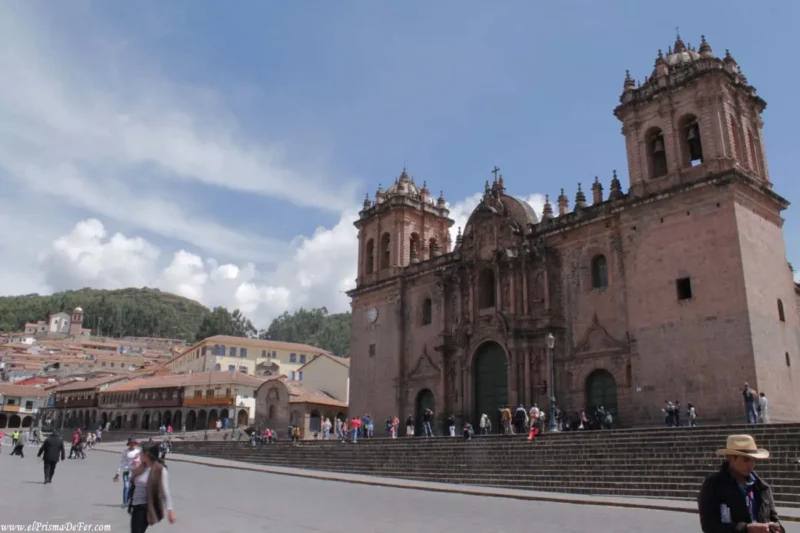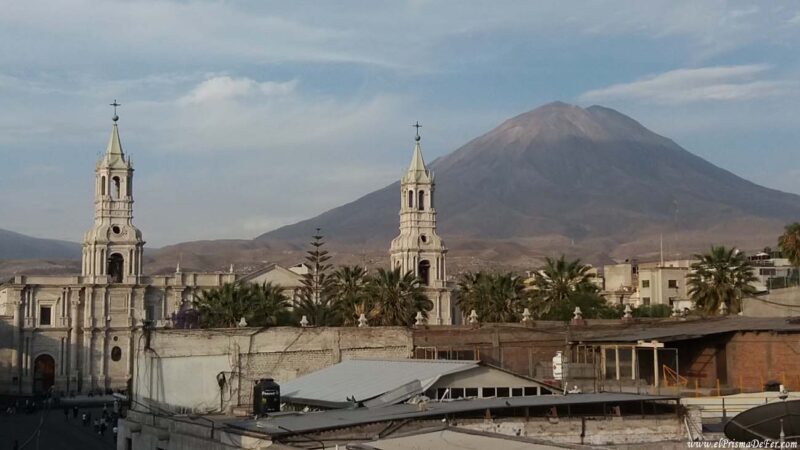The Sacred Valley of the Incas was the region where I most felt the Inca legacy. A short distance from Cusco, a landscape of mountains, agricultural terraces, traditional villages, and archaeological sites unfolds, revealing the grandeur of the Inca civilization.
Exploring this region is like traveling back in time, connecting with history and at the same time with the daily lives of communities that still preserve their ancestral customs.
In this post, I'll tell you what to see in the Sacred Valley of the Incas, how to get around, and useful tips to help you plan your visit.
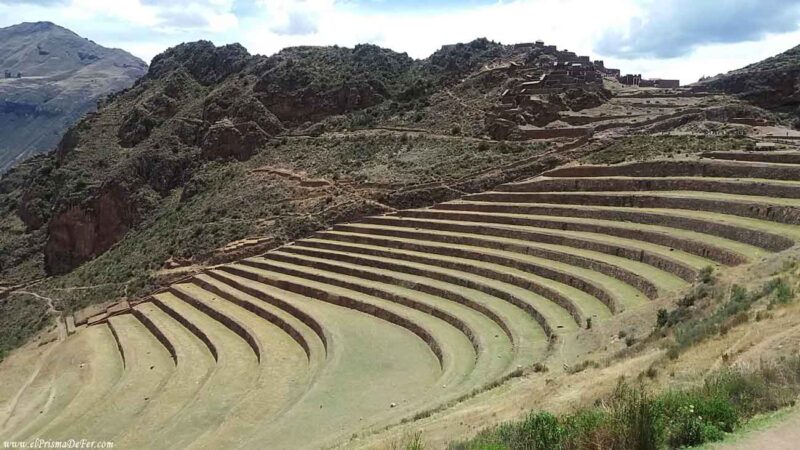

Table of Contents
Where is the Sacred Valley located?
The Sacred Valley of the Incas is located in the Cusco region, in the heart of the Peruvian Andes. It stretches along the Urubamba River, between the towns of Pisac and Ollantaytambo, encompassing a series of valleys and mountains that are part of the ancient Inca network.
Its proximity to the city of Cusco, less than an hour away by car, makes it one of the most accessible and popular excursions for those visiting this historic capital of the empire.
Geographically, the valley is located at an average altitude of 2,800 meters above sea level, making it lower than Cusco and, therefore, with a milder and more pleasant climate.
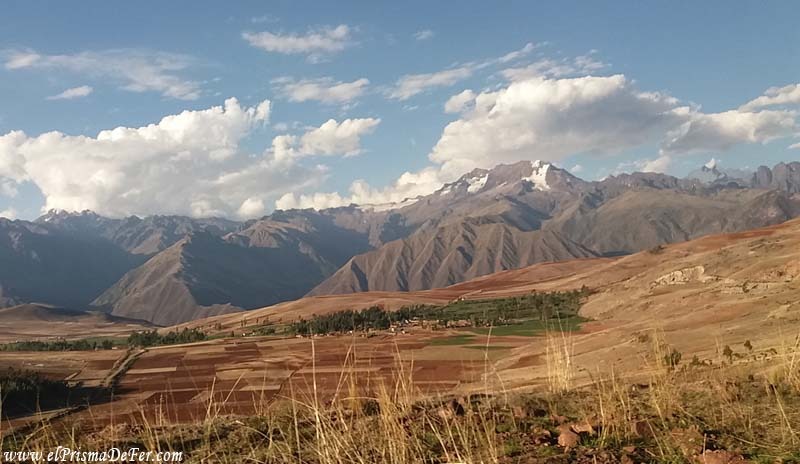
In addition to its strategic location on the trail to Machu Picchu, this area is an ideal spot to acclimatize to the altitude while also discovering the cultural and natural wealth that surrounds it.
Why is it called the Sacred Valley?
The name "Sacred Valley" comes from the importance this region held for the Incas. Its fertile lands, bathed by the waters of the Urubamba River, were ideal for growing corn, potatoes, and other essential crops for the empire.
Thanks to its temperate climate and geography, the valley became one of the main agricultural centers, ensuring food for thousands of people.
But beyond its agricultural significance, the valley also had profound spiritual significance. The Incas considered it a sacred place due to its proximity to the mountains and Andean spirits, whom they worshipped.

The temples, terraces, and fortresses that remain are testimony to this connection between the divine, nature, and everyday life.
How to tour the Sacred Valley from Cusco
The most common way to explore the Sacred Valley is from the city of Cusco, as it is very close and well connected.
Many travelers choose to do so on an organized day trip, which often includes stops at major sites like Pisac, Ollantaytambo, and Chinchero, with a guide and transportation included. This option is convenient if you're short on time and want to see the main attractions in one day.
Another, more flexible alternative is to tour the valley on your own. Buses and minivans depart from Cusco to the various villages in the valley, allowing you to create a more personalized itinerary and stop at each location at your leisure.
It's also possible to hire private taxis or local drivers who can cover the entire route in a day, ideal if you're traveling in a group or want to move at your own pace.
The Cusco Tourist Ticket
To visit most of the archaeological sites in the Sacred Valley, you must purchase the Cusco Tourist Ticket, a pass that includes several historical and cultural sites in both the valley and the city of Cusco. This ticket cannot be purchased online: it is only available in person at the entrances to the sites or at authorized offices of the COSITUC (Cusco Integrated Tourism and Cultural Services Committee).
Ticket types
- General Ticket: Lasts 10 days and allows entry to 16 sites in total, distributed between Cusco, the South Valley, and the Sacred Valley. It's ideal if you plan to explore the region at a leisurely pace.
- Partial Tickets: last 1 or 2 days (depending on the tour) and include only a few specific sites. They're a good option if you're short on time.
Sacred Valley sites included
In the Sacred Valley, the Tourist Ticket allows you to enter:
- Pisac
- Ollantaytambo
- Chinchero
- Moray
Important: The Maras Salt Mines are not included in the ticket; they are paid for separately at the entrance.
Prices by 2025 (approx.)
- General Ticket: 130 soles for adults.
- Partial Ticket: 70 soles for adults.
(Prices may vary slightly over time, so it's a good idea to check the official website when traveling).
Where to buy it
- In the offices of the COSITUC in Cuzco (Avenida El Sol 103).
- At the entrance to the included sites (Pisac, Ollantaytambo, Chinchero, etc.).

You might be interested in reading about how to get to Machu Picchu economically and with a few hours of trekking
Which ticket is best for the Sacred Valley?
If you're planning to explore the Sacred Valley in a single day, it's best to purchase the Partial Ticket – Circuit III, which includes the valley's main sites: Pisac, Ollantaytambo, Chinchero, and Moray. This 1 or 2 day pass will cover the essentials without overpaying.
However, if you are going to stay longer in Cusco and also want to explore the archaeological sites near the city (such as Saqsayhuamán, Q'enqo, Tambomachay and Puka Pukara), as well as some in the South Valley, the ideal option is the General Ticket, since it lasts 10 days and gives you full access to 16 sites. This is the most convenient option if your trip is for several days and you want to make the most of your experience.

Map with the main attractions of the Sacred Valley and Cusco
What to see in the Sacred Valley in Peru
Pisac
Pisac is one of the most famous towns in the Sacred Valley, famous for both its artisan market and the impressive Inca ruins that surround it.
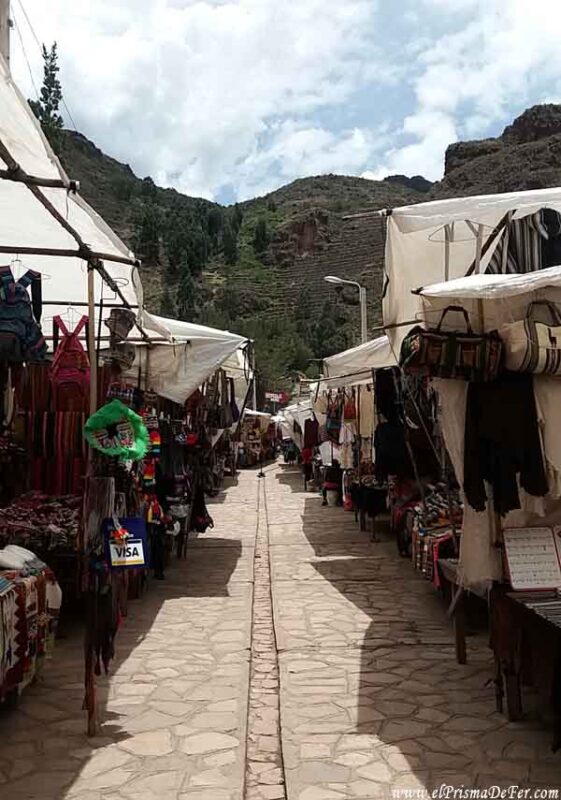
Founded in pre-Inca times and later expanded by the Incas, the Pisac archaeological site is notable for its agricultural terraces, which descend in a stair-like fashion down the mountain, and for its stone temples that showcase the precision of Inca architecture.
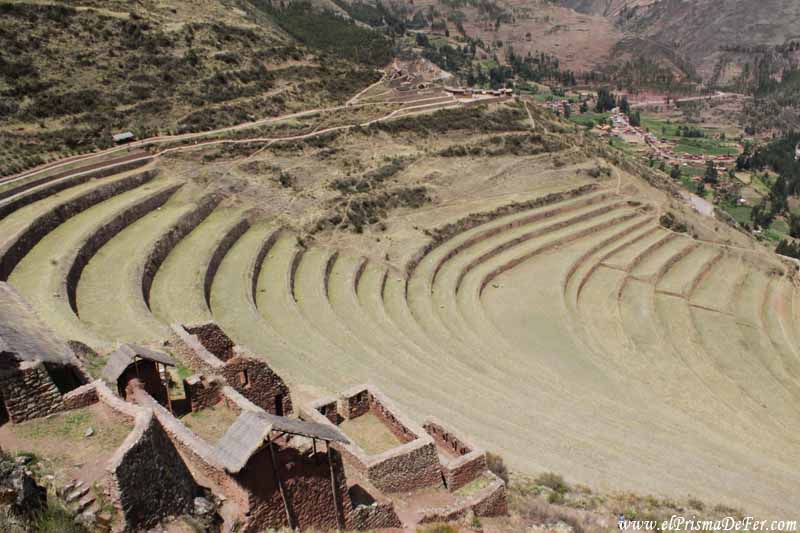
It is believed that, in addition to being a key agricultural center, it served religious and defensive functions thanks to its strategic position in the valley.
How to get there by public transport
Minivans to Pisac depart from the city of Cusco mainly on Puputi Street, located in the Wanchaq neighborhood (about a 15-minute walk from the Plaza de Armas, or a 5-minute taxi ride).
There, you'll find several vans and minibuses that make the direct route to Pisac, with frequent departures throughout the day. The trip takes about 45–60 minutes and is the most economical way to get there on your own.
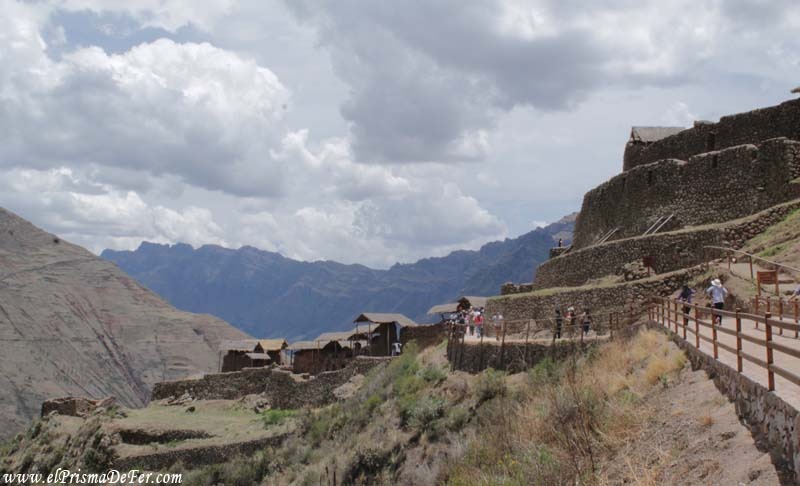
Tickets
Admission to the Pisac ruins is included in the Cusco Tourist Ticket. It is not possible to purchase a single ticket for Pisac only.
What to see in Pisac
- Pisac Inca Ruins: terraces, temples and viewpoints with spectacular views of the valley.
- Artisan Market: one of the most colorful in the region, ideal for buying textiles and crafts.
- Main square: where local life and the typical Andean town atmosphere are concentrated.
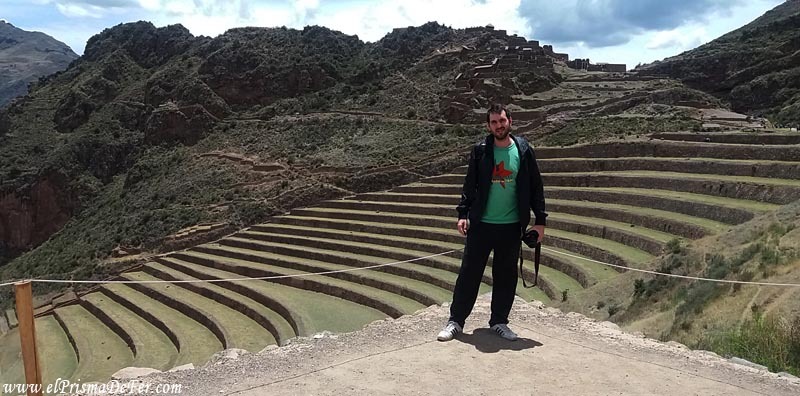
Distances and visit time
- Distance from Cusco: 33 km.
- Travel time: 45-60 minutes by public transport.
- Recommended visit time: 3 to 4 hours to explore the ruins at a leisurely pace and stop by the market.
Ollantaytambo
Ollantaytambo is a site of enormous historical and cultural significance. It was one of the most important fortress cities of the Inca Empire and the scene of one of the few Inca victories over the Spanish conquistadors.
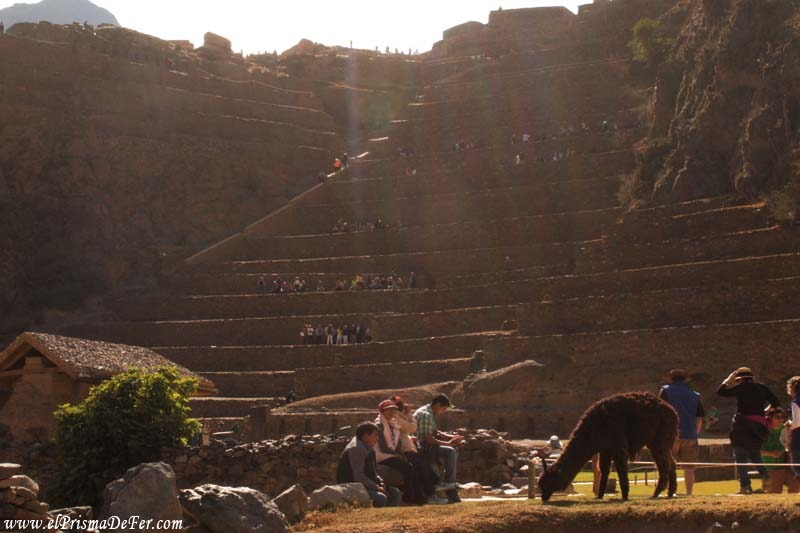
The archaeological site, with its imposing stepped fortress, is one of the most impressive in the Sacred Valley and a must-see before reaching Machu Picchu.
Today, the town preserves a perfectly preserved Inca urban layout, with cobblestone streets and functioning water channels.
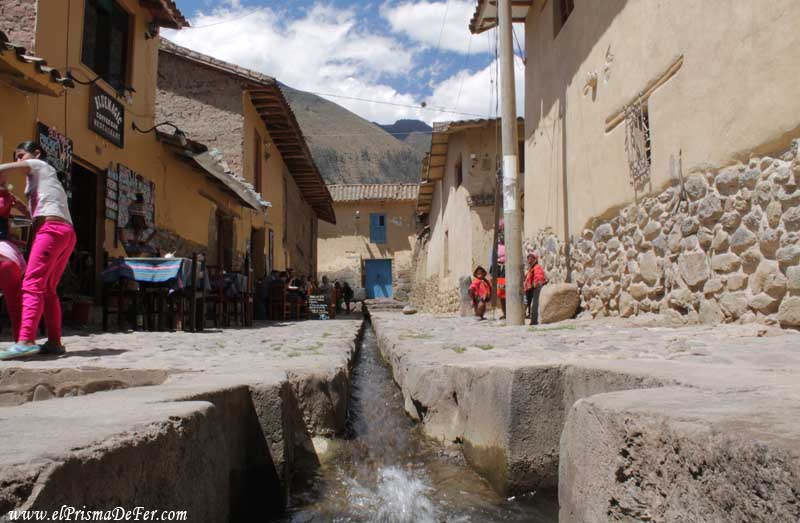
How to get there by public transport
From Cusco you can get there by bus or minivan that depart from Pavitos Street. The journey takes between 1 hour 45 minutes to 2 hours. It is also possible to get there by train from Cusco, although most people use this as their starting point to go to Aguas Calientes.

Tickets
As with Pisac, admission to the Ollantaytambo ruins is included in the Cusco Tourist Ticket. There are no individual tickets for this archaeological site.
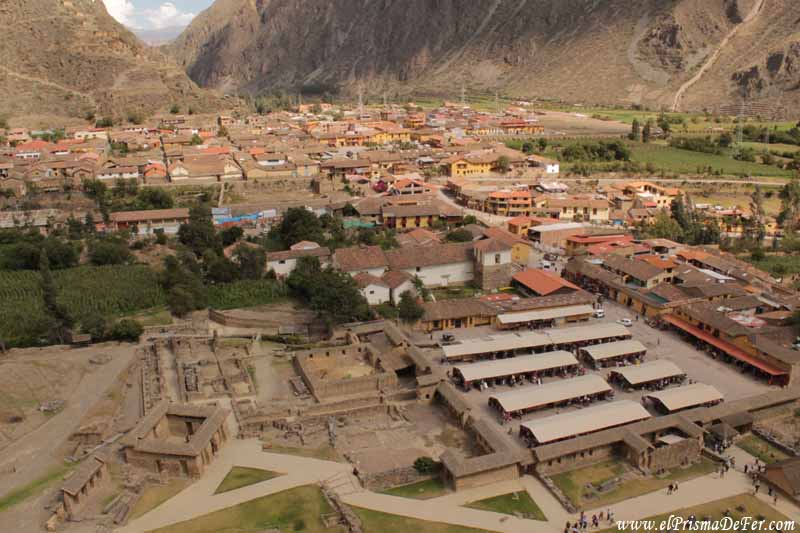
What to see in Ollantaytambo
- Inca fortress: with its enormous terraces and temples high on the mountain.
- Temple of the Sun: built with giant stone blocks that demonstrate Inca architectural precision.
- The living town: Ollantaytambo is considered one of the Inca “living cities” since it preserves its original layout and is still inhabited.
- Valley viewpoints: perfect for appreciating the magnitude of the landscape and Inca engineering.
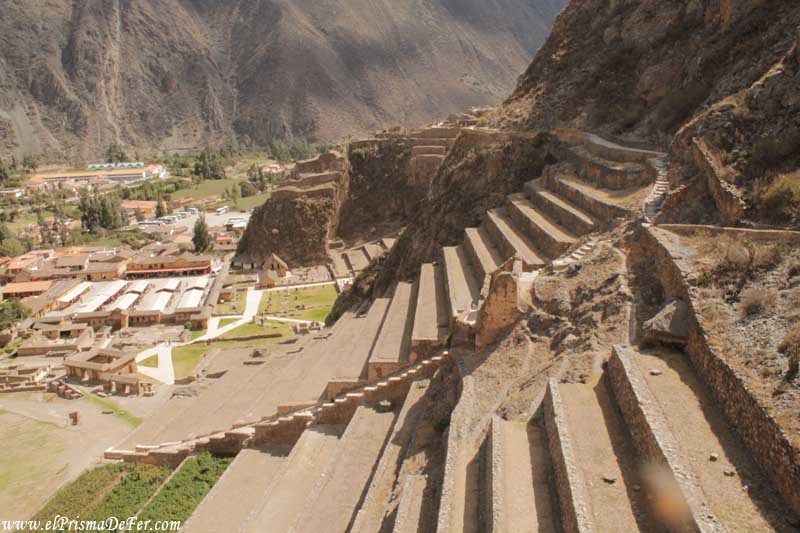
Distances and visit time
- Distance from Cusco: 72 km.
- Travel time: Approx. 2 hours by public transport.
- Recommended visit time: about 3 hours to explore the ruins and another 1 hour to walk around the town.
Chinchero
Chinchero is known as the "rainbow town" for its colorful landscapes and strong textile tradition. During Inca times, it was an important agricultural and ceremonial center, and even today it preserves archaeological remains and a layout that blends with colonial buildings.
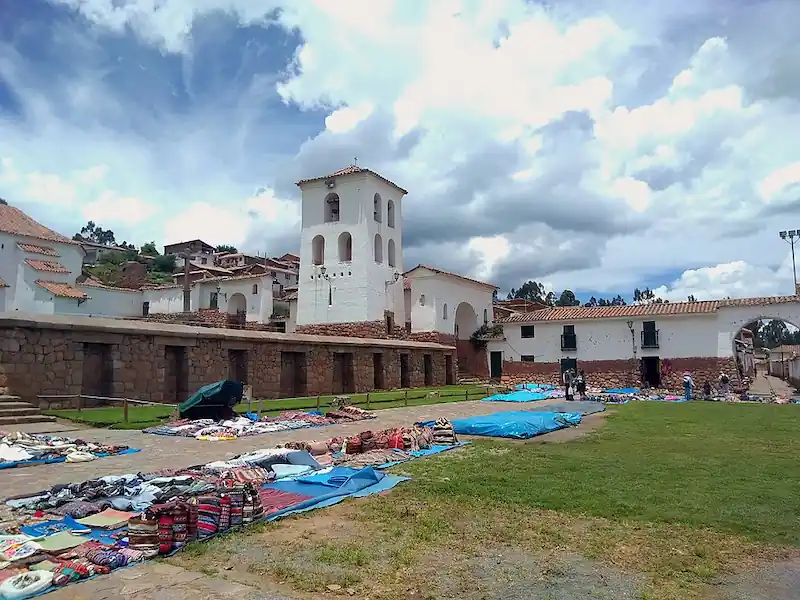
In the main square, the 17th-century church stands out, built on the site of an ancient Inca palace, reflecting the cultural fusion of the area.
Chinchero is also one of the best places in the valley to see how local communities keep their ancestral customs alive.
How to get there by public transport
From Cusco, buses and minivans leave frequently for Chinchero from Pavitos street. The journey is short, about 30 to 40 minutes.
Tickets
Access to the archaeological site and the church is included in the Cusco Tourist Ticket.
What to see in Chinchero
- Inca ruins and agricultural terraces with panoramic views of the valley.
- Colonial Church of Our Lady of Monserrat, with impressive frescoes.
- Community textile centers, where traditional dyeing and weaving techniques are demonstrated.
- Sunday market, ideal for buying local products.
Distances and visit time
- Distance from Cusco: 28 km.
- Travel time: approx. 40 minutes.
- Recommended visiting time: 2 to 3 hours.
Maras Salt Mines
The Maras Salt Mines are one of the most impressive sights in the Sacred Valley. They comprise more than 3,000 staggered salt pools on the mountainside, used from pre-Inca times to the present day.

Salt water emanating from a spring is distributed in the ponds and, when it evaporates, leaves behind salt, which is then collected by local families.
This place is not only visually appealing, but also an example of how an ancient tradition lives on in the 21st century.
How to get there by public transport
From Cusco, you can take a bus to Urubamba or Ollantaytambo and ask to get off at the Maras detour. From there, you'll need to take a taxi or motorcycle taxi to reach the salt mines.
Another option is to book a tour from Cusco that combines Maras with Moray.
Tickets
Access to the Maras Salt Mines has a separate cost from the Tourist Ticket (approx. 10 soles per person).
What to see in the Maras Salt Mines
- The set of salt pools that form a unique landscape.
- The tradition of salt harvesting, which is still maintained by local communities.
- Panoramic viewpoints, ideal for taking photos of the place.
- Maras pink salt, a typical product that can be purchased directly there.
Distances and visit time
- Distance from Cusco: 50 km.
- Travel time: Approx. 1 hour and 30 minutes total.
- Recommended visiting time: between 1 and 2 hours.
Moray
Moray is one of the most enigmatic archaeological sites in the Sacred Valley. Its famous amphitheater-shaped concentric circles were used by the Incas as an agricultural laboratory.
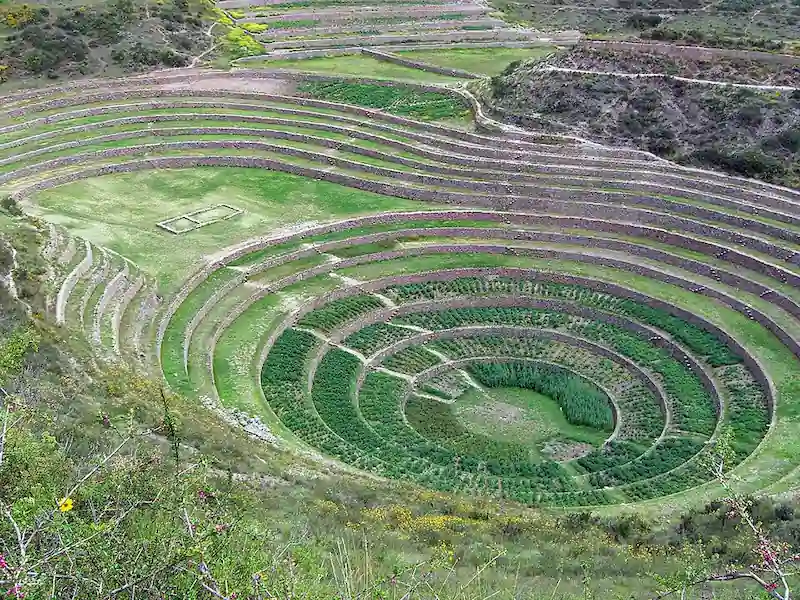
Thanks to the different depths and orientations, each terrace generated a different microclimate, allowing for experimentation with crops and adaptation to different altitudes in the empire.
This ingenious system demonstrates the advanced knowledge the Incas had about agriculture and nature.
How to get there by public transport
There is no direct public transportation to Moray. The most common way is to take a bus from Cusco to Urubamba and get off at the Maras intersection. From there, you can hire a taxi or motorcycle taxi to take you there.
Another alternative is to visit Moray as part of an organized tour with the Maras Salt Mines.
Tickets
Admission to Moray is included in the Cusco Tourist Ticket.
What to see in Moray
- The concentric circles of terraces, unique in the world.
- Different depths and microclimates, evidence of experimental agricultural use.
- Surrounding Andean landscapes, ideal for photography.
- Combination with the Maras Salt Mines, since they are very close to each other.
Distances and visit time
- Distance from Cusco: 50 km.
- Travel time: Approx. 1 hour and 30 minutes total.
- Recommended visit time: 1 to 2 hours to walk around the terraces and enjoy the scenery.
Organized activities in the Sacred Valley from Cusco

Where to sleep in the Sacred Valley
While it's possible to visit the Sacred Valley on day trips from Cusco, spending at least one or two nights in the valley can be a great idea. Not only does it allow you to explore the archaeological sites more calmly and without rushing, but you can also enjoy the tranquility of the villages in the evening, when most tourists return to the city.
In Pisac you'll find small, quiet accommodations, ideal for those seeking a relaxing atmosphere, surrounded by nature and with easy access to the artisan market and the ruins.
Ollantaytambo, on the other hand, is an excellent base if you plan to continue your trip to Machu Picchu, since trains to Aguas Calientes leave from here; Plus, sleeping in the town gives you the opportunity to explore without the crowds of visitors who arrive during the day.
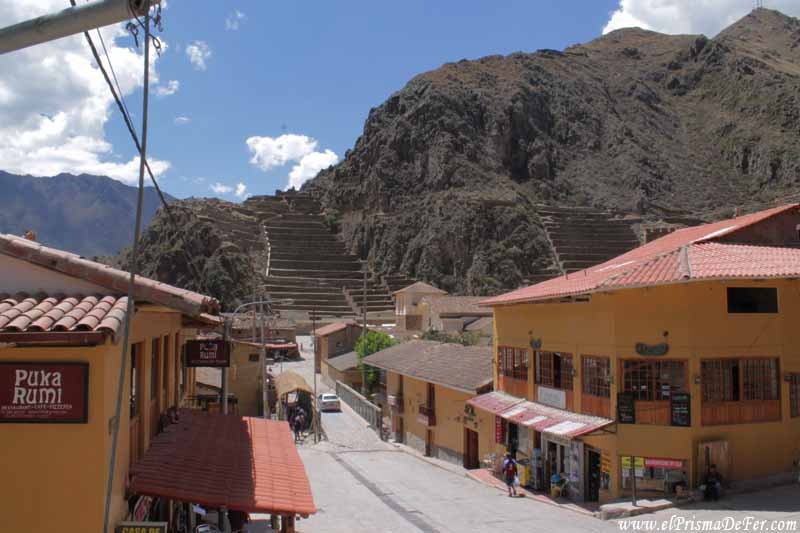
There are also more exclusive alternatives in the middle of the valley, such as boutique hotels or lodges with views of the mountains and the Urubamba River, perfect for those seeking a stay closer to nature and with greater comfort.
Best time to go to the Sacred Valley
The Sacred Valley shares Cusco's climate, as it is located at a similar altitude and close to the city. Therefore, the best time to visit is during the dry season, from May to September, when the days are sunny, the roads are safer, and the landscapes are ideal for exploring ruins, villages, and agricultural terraces.
During the rainy season (November to March), although the landscapes are greener and more vibrant, the rain can complicate travel and some hikes, especially in places like Ollantaytambo or Pisac. However, there are fewer tourists, allowing for more leisurely exploration of the valley and better photo opportunities without the crowds.
My thoughts on the Sacred Valley
Both Cusco and the Sacred Valley were some of my favorite places in Peru. It's a region where the Inca legacy permeates every step of the way: from the imposing ruins that dominate the mountains to the villages that still preserve their ancestral customs.
The landscapes are epic, with terraces blending into the mountains, markets, and archaeological sites that convey the grandeur of Inca culture.
If you don't have much time, I recommend at least visiting Pisac and Ollantaytambo, since they contain a good part of the valley's essence and help you better understand the importance this region had in the past.
Support The Prism of Fer!
Your support helps me continue creating free content on the blog. Thank you so much!




